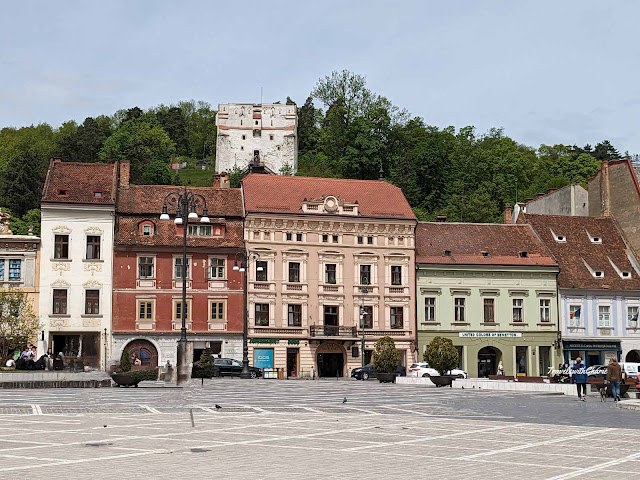White Tower
Brașov is a city nestled in the Carpathian Mountains in Transylvania. Remnants of its medieval fortifications and bastions are added attractions to this buzzing city. The White Tower along with the Black Tower are two of the remaining watchtowers still visible today.
During the Communist period, Brașov was called Orasul Stalin or Stalin City after the Soviet leader, Joseph Stalin.
Black Church
This is such a storied Gothic church which was originally the Catholic Church of St. Mary before it was converted to a Lutheran Church. It was believed to have been affected by fire in 1689 which blackened its exterior walls and roof. But a new 21st century study reveals that this wasn’t the case at all. The only reason for its blackened state according to the study is environmental pollution caused by the industrialization of Brasov in the 19th century. The walls have since been cleaned but there are traces of black spots on the roof.
Republicii Street
This long pedestrian street extends from Council Square to Eroilor Boulevard, a distance of almost half a mile. There are so many terrace cafés and restaurants to choose from that deciding where to eat will not be an easy task.
Casa Sfatului (former Council House)
The Council House which dates back to the 15th century is now the Brasov County Museum of History.
Strada Muresnilor
One of the busiest streets in Brasov, it runs through the heart of the city.
Piața Sfatului (Council Square)
During my second visit in September, this square was alive with people strolling and hanging out with friends and family at the outdoor cafés and ice cream shops.
Tampa Hill and Brasov sign
There’s a cable car that goes up to Tampa Hill which has one of the best panoramic views of Brasov.
Rope Lady
The Rope Lady points toward Rope Street.
Strada Sforii (Narrowest street)
This isn’t just an ordinary alley. It was used by firefighters with their water hoses to pass quickly through the neighborhood in case of fire.Strada Sforii (Rope Street)
St. Catherine’s Gate is the only surviving medieval gate in Brasov. It was made by the Tailor’s Guild in 1559 as part of the defensive fortification surrounding Brasov. The four turrets signify the town’s judicial autonomy and its right to impose capital punishment.
Schei Gate (Poarta Schei)
This is an early 19th century gate built to allow more traffic into the city.Canola field
The sight of yellow fields is one of the delights of driving around Transylvania in May.
How to get there:
I was on a private two-day tour with Nicolas Experience Tours. It beats a ten-hour day trip from Bucharest to Brasov, Bran Castle and back. You can find out more about the various tours offered by Nicolas Experience Tours in Romania, Bulgaria, Moldova and Ukraine here: https://experience-tours.ro.
If you prefer to visit on your own, there are trains and buses that go to Brasov. Check rome2rio.com for options
*****
Images by TravelswithCharie













